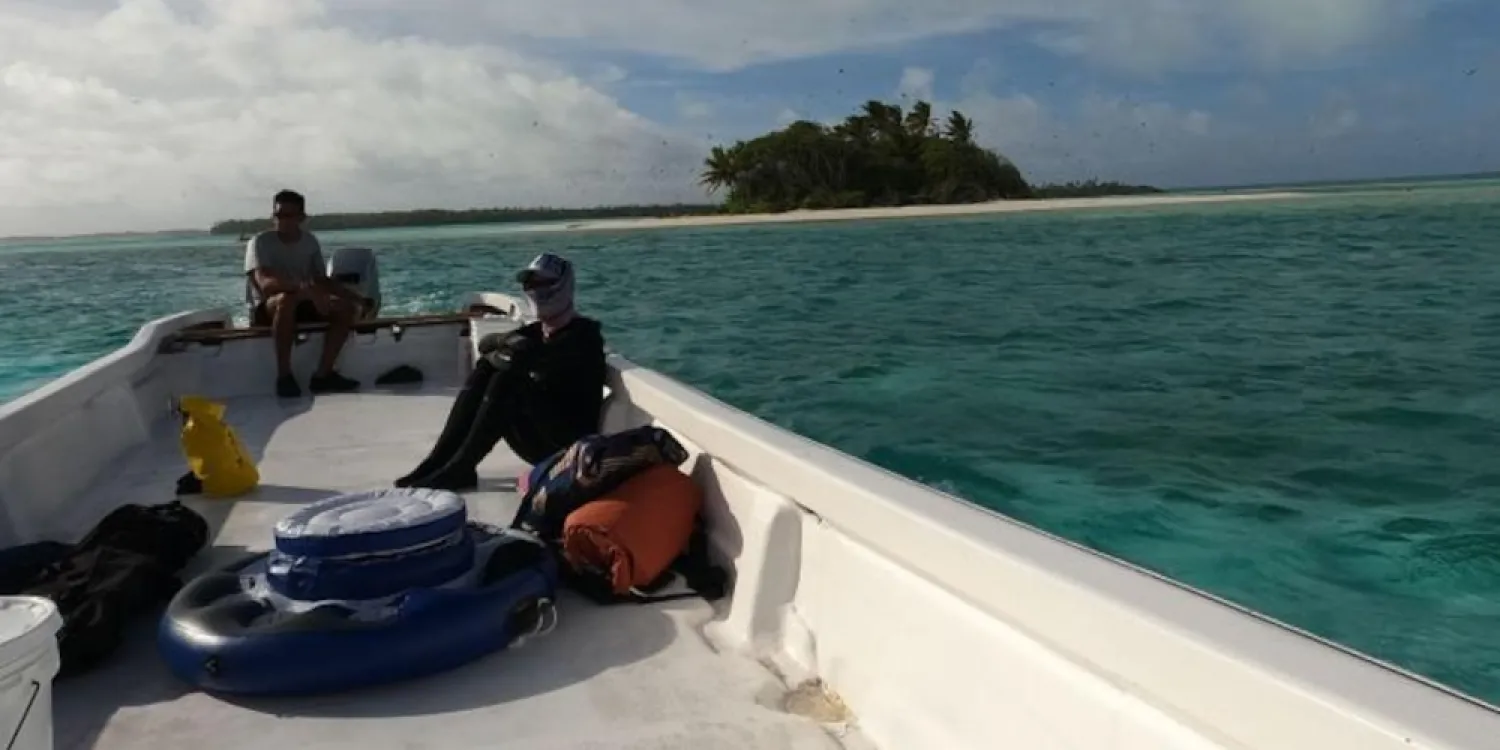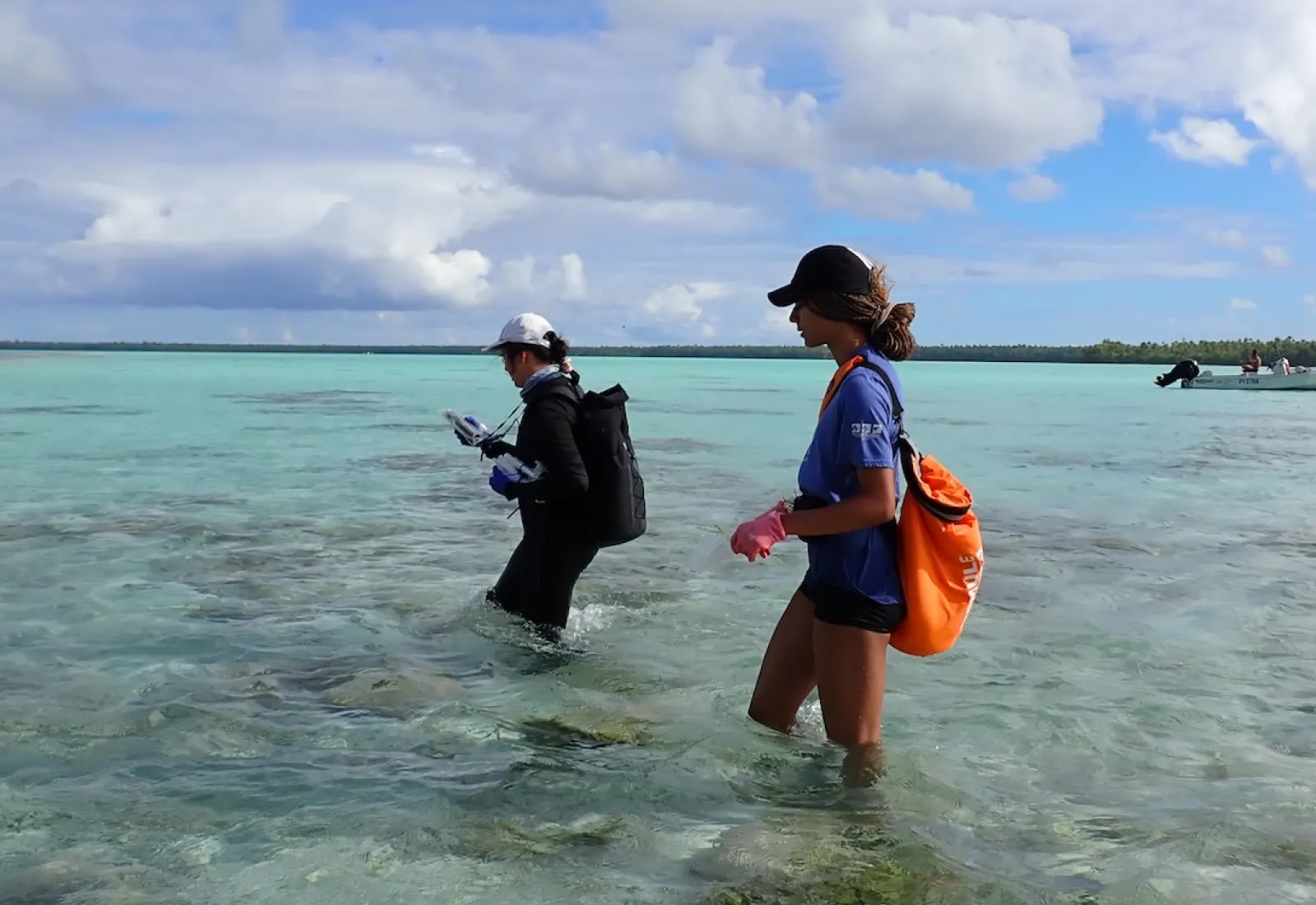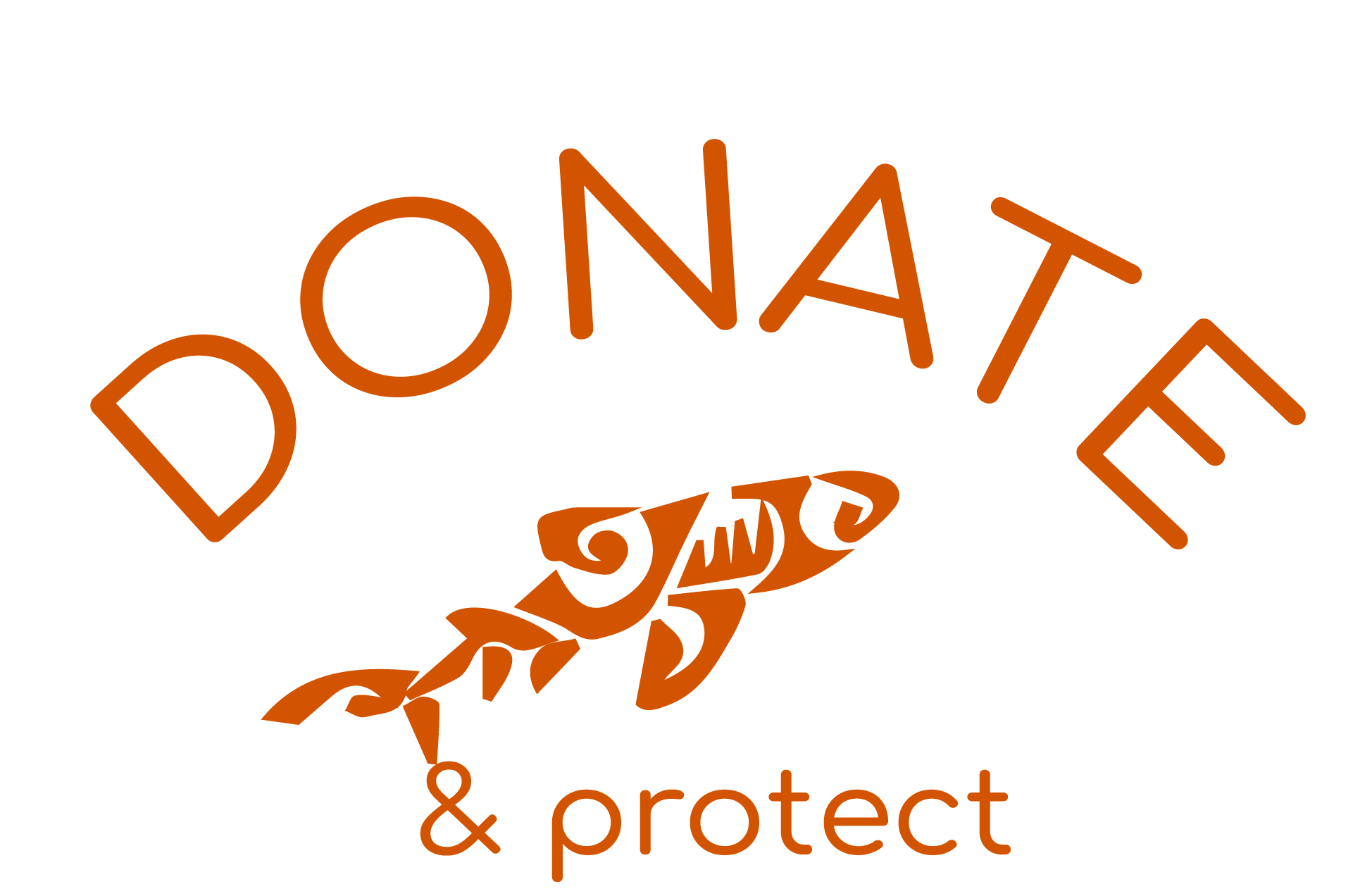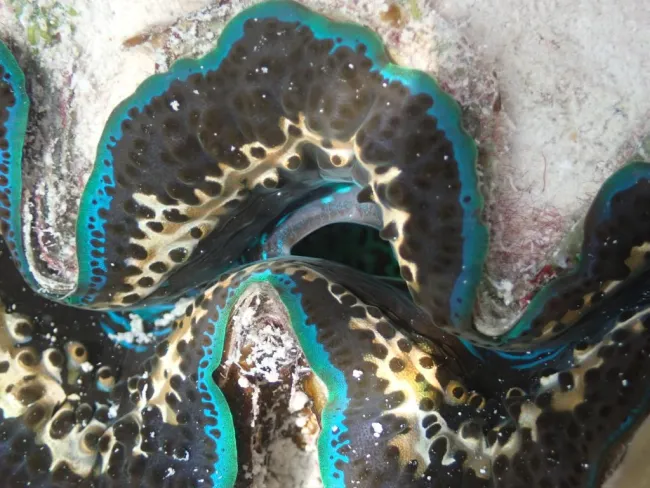 blue clam
blue clam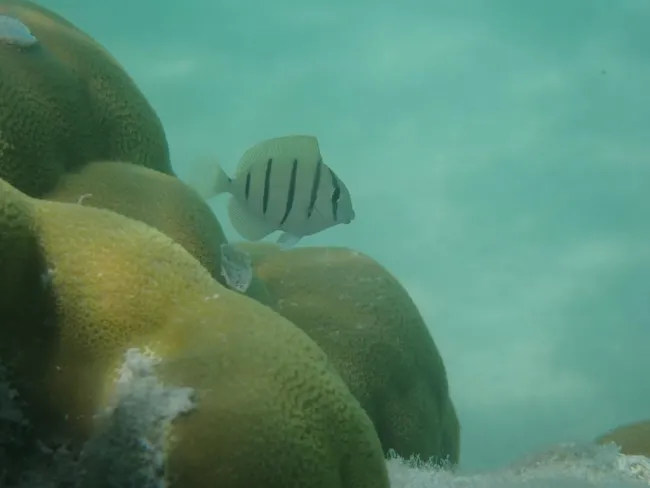 convict tang
convict tang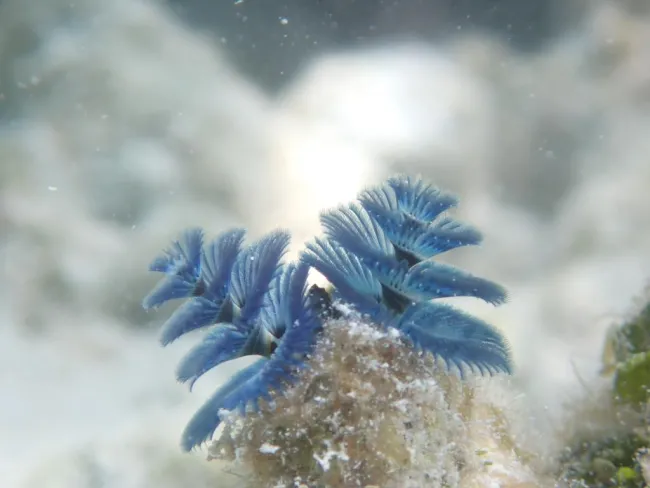 tree worms
tree worms
To find causal links across the lands-sea interface we are tracking how benthic (e.g., sediment, coral and algae) and pelagic (e.g., fish) assemblages and their ecology change throughout the rat eradication that Tetiaroa underwent in 2022. This holistic sampling approach allows us to characterize the environment in which reef organisms are living and assess both shifts in and impacts of nutrient cycling as a result of rat eradication.
In 2023 our team sampled in late November to early December. At a year and a half post-eradication, and with noticeable changes in bird populations (e.g., observations of ground nesting birds on Rimatuu), this time point provides a useful comparison to our pre-eradication data and at 6-months post eradication (November 2022). One major outcome from this trip is the continuation of our algae sampling around the entire atoll lagoon. We now have data from November 2021, 2022, and 2023, which will be used to create detailed maps of nutrient flows to coral reefs before and after the rat eradication.
In 2023 we also focused on analyzing a complex data set that includes data from across the TARP group (seabirds, algae, benthic community, fish, and water and coral microbes). This data, collected before rat eradication allows us to compare motu and nearshore environments that are historically rat free (Motu Aie), recently rat free (Reiono), and occupied by rats (Rimatuu). This work should allow us to develop a framework to evaluate the effect of island/coral reef restoration on short and long-term outcomes.
